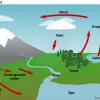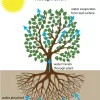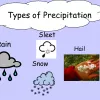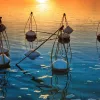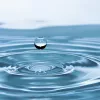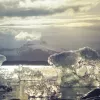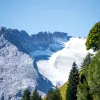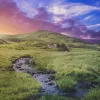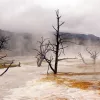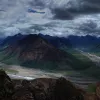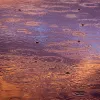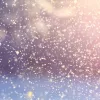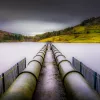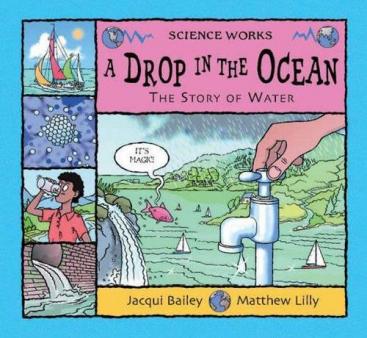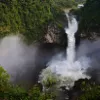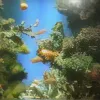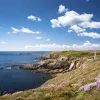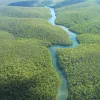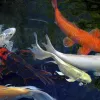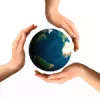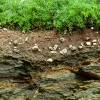Important update from TheSchoolRun
For the past 13 years, TheSchoolRun has been run by a small team of mums working from home, dedicated to providing quality educational resources to primary school parents. Unfortunately, rising supplier costs and falling revenue have made it impossible for us to continue operating, and we’ve had to make the difficult decision to close. The good news: We’ve arranged for another educational provider to take over many of our resources. These will be hosted on a new portal, where the content will be updated and expanded to support your child’s learning.
What this means for subscribers:
- Your subscription is still active, and for now, you can keep using the website as normal — just log in with your usual details to access all our articles and resources*.
- In a few months, all resources will move to the new portal. You’ll continue to have access there until your subscription ends. We’ll send you full details nearer the time.
- As a thank you for your support, we’ll also be sending you 16 primary school eBooks (worth £108.84) to download and keep.
A few changes to be aware of:
- The Learning Journey weekly email has ended, but your child’s plan will still be updated on your dashboard each Monday. Just log in to see the recommended worksheets.
- The 11+ weekly emails have now ended. We sent you all the remaining emails in the series at the end of March — please check your inbox (and spam folder) if you haven’t seen them. You can also follow the full programme here: 11+ Learning Journey.
If you have any questions, please contact us at [email protected]. Thank you for being part of our journey it’s been a privilege to support your family’s learning.
*If you need to reset your password, it will still work as usual. Please check your spam folder if the reset email doesn’t appear in your inbox.
Water and the water cycle
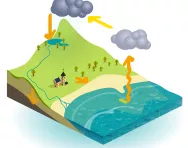
What is water and what is the water cycle?
Water is vital for all living things. Animals drink water, while plants take water up through their roots.
Water never leaves the Earth, it simply moves around the ‘water cycle’. The water cycle follows the journey of water from oceans to clouds to rain to streams to rivers and back into the ocean. The water cycle involves the scientific processes of evaporation and condensation and is also known as the hydrologic cycle ('hydro’ means water in Greek).
Top 10 facts
- The water cycle is essential to life on our planet: without it there would be no plants or animals. Desert habitats, with little rain, are much more barren than other areas of the world.
- Humans are made up of about 75% water.
- The water cycle is powered by the Sun: heat makes water evaporate, before it cools and condenses and falls back to the ground.
- Water can exist in three forms: liquid (water), solid (ice) or gas (water vapour).
- Around two thirds of the world's water is in polar ice caps and glaciers.
- About 70% of he Earth is covered in water. An incredible 97% of Earth's water is in the oceans (this is salty water) and 2% is in the ice caps, leaving only 1% available for us to drink.
- There are underground reservoirs called aquifers. Some water in the ground may stay there for thousands of years.
- You might be drinking water that dinosaurs drank! Because water is recycled and doesn’t leave the Earth or is formed all the water currently on our planet is the same water that has been there for millions of years.
- The Nile is 4132 mile long, making it the longest river in the world.
- Water can be used to create electricity through a hydro-electric power station.
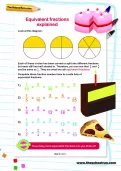

Boost Your Child's Learning Today!
- Let us create a tailored plan for your child
- English & maths resources added each week to your plan
- Watch your child leap ahead in their learning & confidence
Did you know?
- Water leaving your body as urine or sweat is evaporated and recycled through the water cycle. The water in your wee and sweat is returned to the water cycle, while other parts (urea and salt for example) are left behind as they do not evaporate with the water.
- Beneath the ground is a water table. This is the level where the ground is saturated with water; the water table can rise or fall depending on the amount of rain that falls.
- When the ground becomes saturated with water it can cause flooding. The water that falls as rain no longer has anywhere to go as the ground is full of water so it stays on top. Many rivers and streams swell with water when this happens and can break their banks and flood as well.
- Frozen water can move and carve out valleys in the form of glaciers. Some of the ice in glaciers has been there for thousands of years and will only re-enter the water cycle is the ice melts.
- Hydroelectric power stations use the force of falling water to generate electricity. They are formed of a reservoir that is high up in a mountainous area, with the generators down below. Water is released and the kinetic energy in it is transformed into electrical energy.
- The longest someone can survive without water is about three days. We need water for lots of jobs in our bodies, such as digesting food. Water is also found in our immune systems and makes up a large part of our blood. Without water our bodies would stop working.
- Drinking water needs to be clean to prevent people from getting diseases. In the UK we have water treatment plants that remove all of the pollutants in water before it can become drinking water. The water has chemicals added to it and is filtered. Formal water treatments to create drinking water have only really been around for the past 100 years or so.
Look through the gallery below and see if you can spot the following:
- Water cycle diagram
- Transpiration
- Types of precipitation
- Water evaporating and leaving salt
- A droplet falling into water
- Ice in the Antarctic
- A glacier in a valley
- A stream
- Hot springs
- A river
- Raindrops
- Snow flakes
- Ladybower Reservoir in the Upper Derwent Valley in the Peak District National Park
Gallery
About
Water is vital for life and humans need to drink it regularly to make sure we have enough in our bodies. When we don’t have enough water in our bodies it is called dehydration.
There are many places that water can be found. We call these ‘bodies of water’. Bodies of water include: oceans, seas, streams, rivers, lakes, ponds, wetlands, marshes, bays, harbours, coves, deltas, and even puddles! There are generally considered to be five main oceans: Pacific, Atlantic, Indian, Southern and Arctic.
Water is never created or destroyed; it simply journeys through the water cycle being recycled each time. The water that we use today has been around for millions of years and the movement of water around our planet is vital to support life on Earth.
The water cycle takes water on a journey and is made up of six possible processes: condensation, infiltration, runoff, evaporation, precipitation, transpiration.
The heat from the sun causes water to turn into a gas known as water vapour. This process is called evaporation. When the sun turns water from plants and trees into water vapour the process is called transpiration.
When water cools down it forms a cloud. This process is called condensation. When a cloud becomes too heavy the water falls to the ground as precipitation. Precipitation can either take the form of rain, sleet, hail or snow.
When precipitation lands on the ground it seeps into the ground or runs off into drains and water ways. It ends up in streams and rivers and eventually returns to the oceans.
Not all water falls into streams, oceans and rivers. A lot of water is locked up in the polar ice caps.
There is evidence that the polar ice caps are gradually melting due to global warming. This will eventually cause the sea level to rise.
Words to know:
Water vapour – water in a gas form
Ice – water in a solid form
Ice cap – a large area (less than 50, 000km²) that is covered in ice.
Condensation – the process of cooling water that turns it from a gas (water vapour) back into a liquid
Infiltration – when water moves down through the ground
Runoff – when water travels over the top of the ground and back into a stream, river or sea
Evaporation – the process of heating water that turns it from a liquid into a gas (water vapour)
Precipitation – water falling to the ground from a cloud. It can be in the form of rain, sleet, hail or snow.
Transpiration – the process of water evaporating out of the leaf of a plant or tree.
Ocean – a very large area of sea. There are usually considered to be five main oceans (Pacific, Atlantic, Indian, Southern and Artic.
River – A flow of water that leads to the sea. A river is a larger flow of water than a stream.
Stream - A flow of water that usually leads into a river. A stream is a smaller flow of water than a river.
Aquifer – an underground reservoir of water
Reservoir – an area where water is stored
Cloud – condensed water (water vapour) that is visible in the atmosphere
Hydropower – the method of changing the kinetic energy from falling water into electrical energy.
Related Videos
Just for fun...
- Play the Natural Water Cycle game
- Download a water cycle colouring-in sheet
- Join Molly on the Journey of Water: try a water cyle interactive activity in the Severn Trent Education Zone (there are water activity sheets to complete, too)
- Make your own 3D model of the water cycle
- The Brainpop Water Cycle interactive game
- Nine online water cycle games to play
- Try your hand at running a city's water cycle and see how long it takes you to get the water from the reservoir to the ocean in an online game
Best books about the water cycle for kids
Find out more
- What is the water cycle? Watch a BBC Bitesize animation, an introductory guide for KS1 and KS2 students
- A complete introduction to the water cycle
- Find out more about all aspects of water, from glaciers to saline water and hydroelectricity
- Read the Met Office's kids' information about the water cycle
- Discover how electricity is formed at hydroelectric power stations
- Print out a child-friendly water cycle diagram from the U.S. Geological Survey and the Food and Agriculture Organization of the United Nations
- Steve Backshall follows the journey of water around the water cycle, from a rainy hilltop in Derbyshire to the North Sea
- The water cycle: the way Earth has been recycling water for over 4 billion years!
- NASA Kids water cycle information
- Download TheSchoolRun's water cycle worksheets: The water cycle, Make your own water cycle and Complete the water cycle
- A water cycle diagram available in beginner, intermediate or advanced levels of detail
- Download a water cycle factsheet
See for yourself
- Make a mini water cycle in a bowl: step-by-step instructions
- See the water cycle in motion, step by step
- Watch a BBC clip on how water is treated in the UK before it is returned to the water cycle
